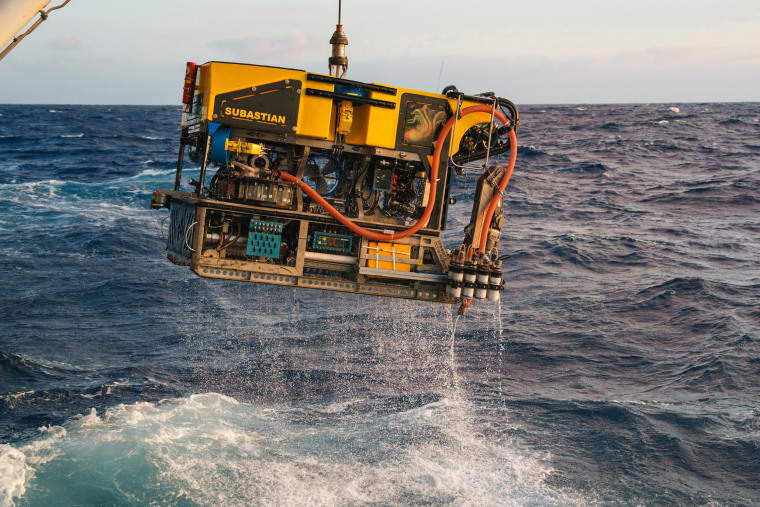The colossal squid, the heaviest invertebrate in the world, was captured on video swimming in the deep sea for the first time since it was identified a century ago.
The video was recorded on March 9 by an international team of scientists and crew on an expedition near the South Sandwich Islands in the South Atlantic Ocean, Schmidt Ocean Institute said in a news release.
The squid, scientifically named Mesonychoteuthis hamiltoni, was a juvenile at nearly 1 foot long, the release said. It was at a depth of 1,968 feet when scientists and crew members on the institute’s Falkor research vessel captured video of it with a remotely operated vehicle called SuBastian.

"It’s exciting to see the first in situ footage of a juvenile colossal and humbling to think that they have no idea that humans exist," said Kat Bolstad of the Auckland University of Technology.
Bolstad was one of the scientific experts who assisted with verifying the video.
"For 100 years, we have mainly encountered them as prey remains in whale and seabird stomachs and as predators of harvested toothfish," she said.
The squid was formally identified and named in 1925, but until now, no one has been able to capture it alive on camera.
It's estimated that the squid can grow up to 23 feet long and weigh as much as 1,100 pounds, the institute said. Little is known about its life cycle, but it loses its transparent body as it becomes an adult.
The colossal squid is not to be confused with a giant squid, according to the Natural History Museum of London. Both are massive cephalopods but belong to different families of squid. The giant squid has much longer tentacles with a narrower body, whereas the colossal squid has a much larger body with shorter tentacles.
Bolstad and Aaron Evans, an independent expert on the glass squid family who also helped verify the video, both said the colossal squid has distinguishing characteristics, including hooks on the middle of its eight arms.
To date, the institute’s ROV SuBastian has captured the first confirmed video of at least four squid species in the wild, including the Promachoteuthis last year and the ram's horn squid in 2020.